#Carolyn Scrace
Text

Animal Defenses. Written by Malcolm Penny. Illustrated by Carolyn Scrace. 1988.
178 notes
·
View notes
Photo
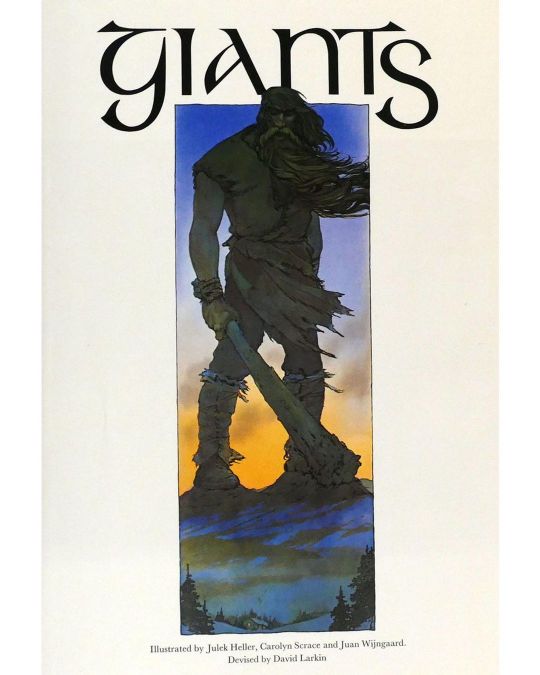
Who remembers this? Let us know if you had it in your collection (or just wanted it). Artist credits are hard to confirm, but the authors were David Larkin and Sarah Teale, contributing artists included Julek Heller, Carolyn Scrace, and Juan Wijngaard. Published by Harry N Abrams, 1979.
98 notes
·
View notes
Text
Cây Ơi Lớn Mau
Cây Ơi Lớn Mau
Cây Ơi Lớn Mau
Cùng xem cách ươm một hạt đậu và quá trình sinh trưởng, phát triển của nó để thấy thiên nhiên thật diệu kì.
Những hình ảnh đẹp và sinh động hiện len trên những trang sách được thiết kế độc đáo qua nét bút tài hoa của họa sĩ Carolyn Scrace.
Giá sản phẩm trên Tiki đã bao gồm thuế theo luật hiện hành. Bên cạnh đó, tuỳ vào loại sản phẩm, hình thức và địa chỉ giao hàng mà có thể phát…
View On WordPress
0 notes
Photo






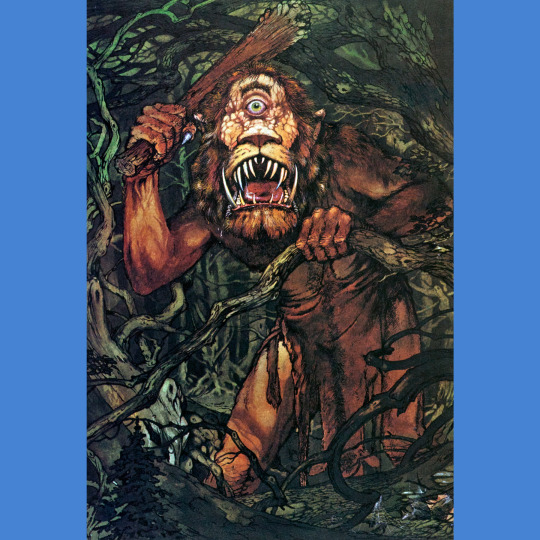

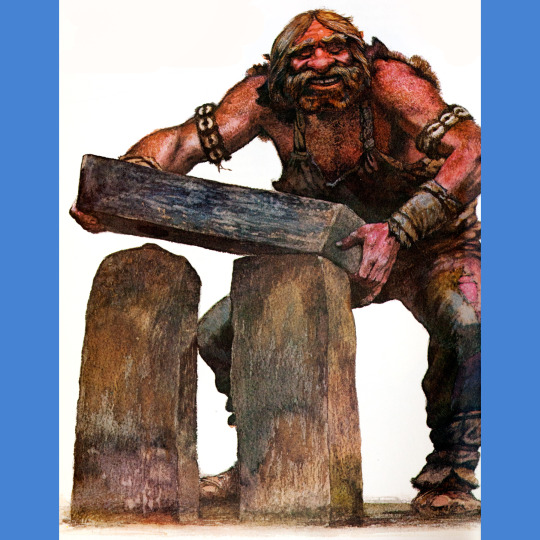

The third and final installment in David Larkin’s series fantasy field guides after Gnomes and Faeries is Giants (1979), which features art from Julek Heller, Carolyn Scrace and Juan Wijngaard. Larkin gets credit here for “devising” the book, while Sarah Teale gets credit for the text. I am not sure how that breaks down in practice, but it sure feels like Larkin had the most to do with the direction of this book.
Faeries is really the solid gold hit of the series, endlessly fascinating, extremely varied. Gnomes feels expressly designed to capitalize on eddies of folkiness in 70s pop culture. Compared to them, Giants feels a bit one note and a bit in search of a vibe. When it boils down, it is essentially a book about very large people. It often plays to that core truth effectively, but it never feels so singular as the other two books, if that makes sense.
Partly that might just be that there are too many folks involved. Where Gnomes is one artistic vision and Faeries and elegant duet, the trio here never quite finds its harmonies. All three deliver stellar work, but rarely does that work collaborate with its neighbors in the way Lee and Froud play off each other. Giants are hard, too, because without markers for scale, they just look like people doing stuff, but if every painting has markers for scale, it gets repetitive. Both of these pitfalls are on view here. One can’t help but wonder why they didn’t do dragons instead.
Which isn’t to say this book isn’t worth getting! It totally is. Put it right on the shelf with the other two, your other Alan Lee books and your copies of the Time Life Enchanted World series. It is certainly a key part of the fantasy art renaissance of the 70s and 80s. Sure, it doesn’t measure up to Faeries. But where else are you going to find a whole book on Giants? They just don’t make ‘em like this any more. (OK, not entirely true — Johan Egerkrans is bringing this sort of thing back with his books Vaesen, Norse Gods and The Undead — thank goodness!).
#RPG#TTRPG#Tabletop RPG#Roleplaying Game#D&D#dungeons & dragons#Giants#David Larkin#Julek Heller#Carolyn Scrace#Juan Wijngaard
97 notes
·
View notes
Text
Origins of Giants
During my travels and study of homo gigantus, there is one question that is often asked to me, which is as follows.
Where do giants come from?
The short answer is: we don't know. Unfortunately, giants pre-date humanity, which makes it difficult for even the most astute historians to dig up records. Even their fossils are hard to come by, due to the prehistoric giant's liking for ritual cremation rather than burial. Much to the chagrin of macroanthropologists, who are unable to ascertain when these creatures evolved, or what from. One may perhaps find a tooth, if the conditions are just right, or a few bone fragments that tell practically nothing about the specimen.
One source of information, however, is carvings. Early giant would often leave etchings of themselves on rocks, the trenches deep enough to withstand a million years of weather. This, coupled with word of mouth, gives us only a slight peek into life before humanity, but it is a peek nonetheless.

Giants themselves are forthcoming with information as to their origin, though it draws more on myth than a scientist like myself would care for. They tell of the giant Ymir, how his body made up the world with his skull for the sky, his brains for the clouds, and his blood for the seas. Some state that their kind, Ymir included, were created from vast blocks of ice melting at the beginning of time. Others tell of Earth piling the strongest rocks when the world was new, a flaming crucible for the titans to be birthed from rubble. Both these stories conjure images of might, as that is a giant's greatest asset. Of course, only a few really believe the legends, mainly those giants who still adhere to the ways of old.
This lack of understanding about just where these creatures originate only adds to the enigma that makes them so fascinating to study.
One thing, however, is for certain. That the sheer size and strength inherent in giants is one of evolution's greatest products.
56 notes
·
View notes
Photo

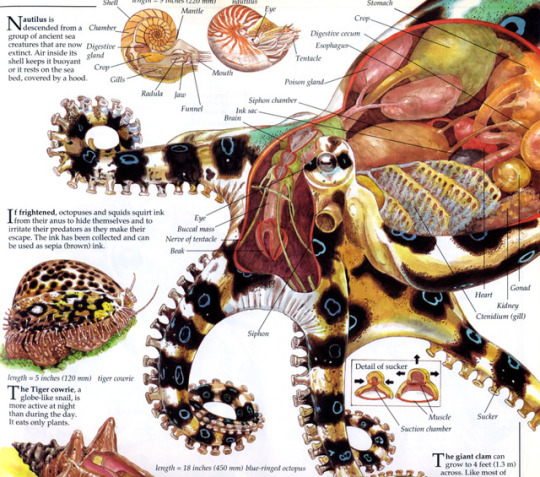
“The Alien Octopus Hypothesis”
In April, 2018, the journal Progress in Biophysics and Molecular Biology published a remarkable scientific paper:
Cause of the Cambrian Explosion – Terrestrial or Cosmic?
33 authors from reputable universities and research institutes, make an incredible point that life did not originate on the planet Earth.
Cephalopods (the group comprising squid, cuttlefish, nautilus and octopus) have a somewhat confusing evolutionary tree, “are an island of mental complexity in the sea of invertebrate animals”
Octopus is the most striking, with features, such as a complex nervous system, sophisticated eyes, the capacity of editing its own DNA (not to mention its 9 brains and 3 hearts), that appear quite suddenly in its evolution (there is evidence of extensive changes in its RNA).
The genes necessary for this transformation, the authors suggest, are not present in its ancestry (the nautilus). Thus, they hold that “it is plausible then to suggest they seem to be borrowed from a far distant ‘future’ in terms of terrestrial evolution, or more realistically from the cosmos at large.”
The paper argues the space-based transfer of life was likely on a larger scale than just retroviruses (proven aliens already).
“One plausible explanation,’ the researchers argue, “in our view, is that the new genes are likely new extraterrestrial imports to Earth – most plausibly as an already coherent group of functioning genes within (say) cryopreserved and matrix protected fertilized octopus eggs.” This would “be a parsimonious cosmic explanation for the octopus’ sudden emergence on Earth [about] 270 million years ago.”
“Nature is incredible, and I do not think it is necessary to call on extraterrestrials to explain” says astrobiologist Frances Westall, being skeptical of the paper...
The Daily Galaxy via US Marine Biological Laboratory and CfA
images:
Terracotta stirrup jar with octopus, ca. 1200–1100 B.C. Helladic, Mycenaean; Late Helladic IIIC; H. 10 1/4 in. (26 cm)
Internal anatomy of a blue-ringed octopus, scanned from The X-Ray Picture Book of Amazing Animals by Gerald Legg. Art by Carolyn Scrace
9 notes
·
View notes
Text
Stream of Consciousness Saturday Open Book, Point, Write"
Stream of Consciousness Saturday Open Book, Point, Write”
Per Linda G. Hill: Your Friday prompt for Stream of Consciousness Saturday is “open book, point, write.” Pick up the closest book to you when you sit down to write your post. Close your eyes, open the book, and place your finger on the page. Whatever word or phrase your finger lands on, write about it. Enjoy!
From Zen Doodle Mindscapes Tap Into Your Emotions by Carolyn Scrace :
Page 98/99…
View On WordPress
0 notes
Photo
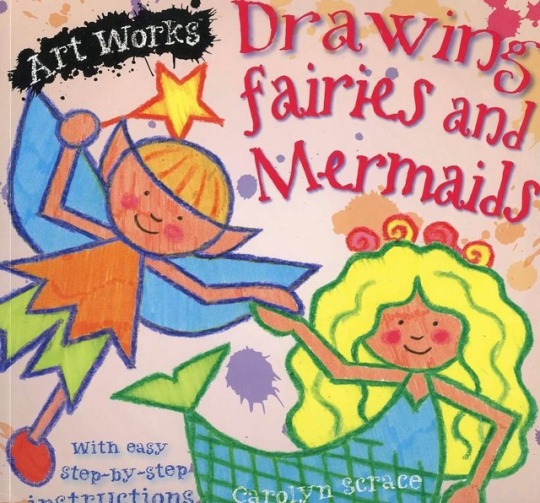
#Drawing #Fairies and #Mermaids by Carolyn Scrace #siren #sirens #ocean #beach #seashore #aquatic#marine #drawingfairiesandmermaids #themermaidstudio #beachlife #takemetothesea #sea #shore #carolynscrace #mermaid http://ift.tt/2zuni8v
0 notes
Text
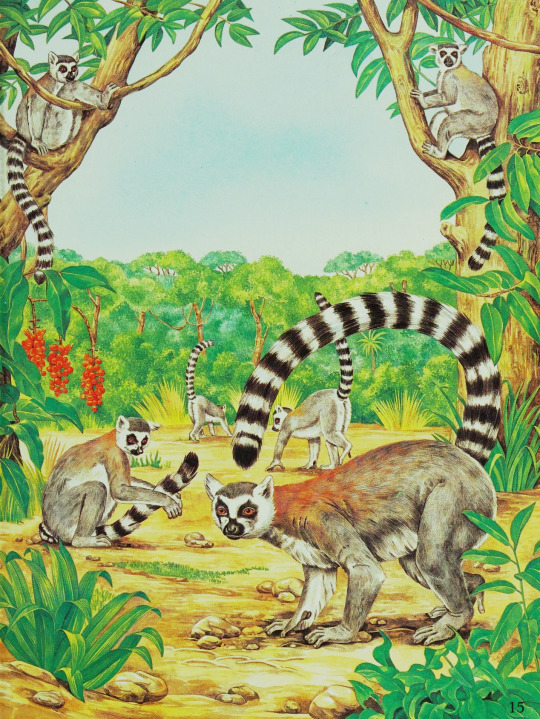
Animal Signals. Written by Malcolm Penny. Illustrated by Carolyn Scrace. 1989.
161 notes
·
View notes
Photo
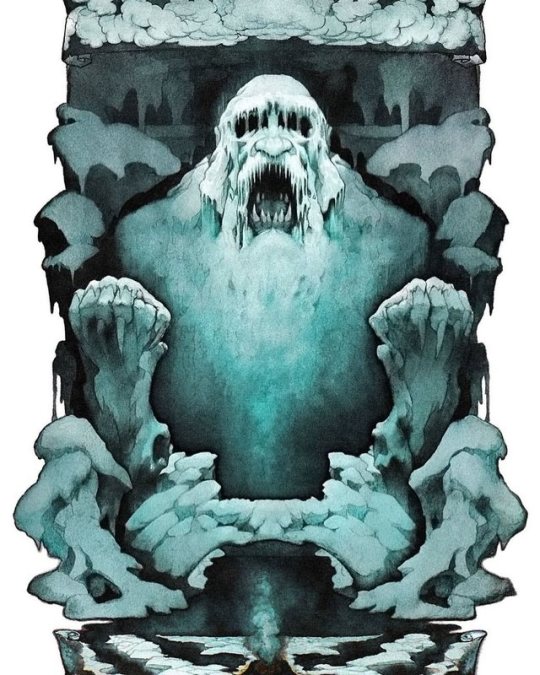
Frost giant on the back cover of Giants (1979), compiled by David Larkin. Artists on the book were Julek Heller, Carolyn Scrace, and Juan Wijngaard, though the individual pieces were not credited. Did you have this book? . #giants #davidlarkin #julekheller #carolynscrace #juanwijngaard #hrimpurs #hrímpursar #frostgiant https://www.instagram.com/p/B2UgIv6l0Fc/?igshid=hjoti5rw8vpb
146 notes
·
View notes